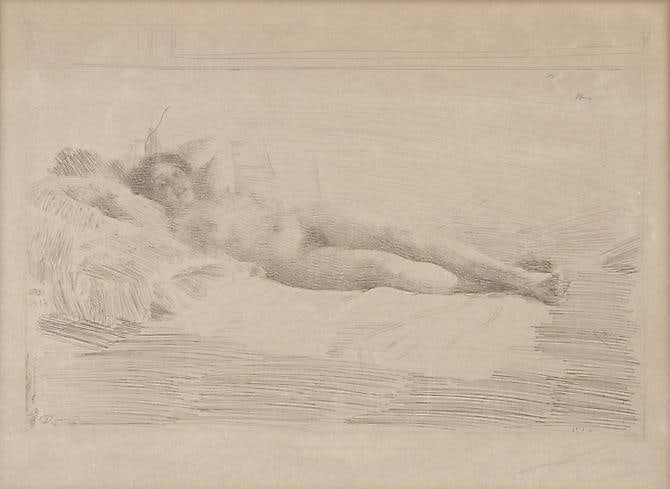Swedish (1860-1920)
Zorn was born in Yvraden, a hamlet in the village of Utmeland in the parish of Mora, Dalarna, and was raised on his grandparents' farm in Yvraden. His talent was first acknowledged when, at the age of 15, he was granted entrance to the Royal Academy of Art in Stockholm. At first he worked in the newly popular medium of watercolor where he became known for his exquisite depictions of water, but after1888 he turned to oil. Portraiture was his mainstay and carried him through eight years (1888-1896) in Paris where his ability to depict a sitter’s character, enhanced by selected surroundings, eventually led to a clientele of wealthy and titled individuals. Seven times, in the decades on either side of the turn of the twentieth century, commissions and other work attracted Zorn to the United States. In 1896, at the height of his career, Zorn and his wife settled permanently in his birth town, the rural hamlet of Mora. There his art and life took a new direction. His interest in preserving the fast-disappearing, old ways of Sweden led him to paint genre scenes of Mora and its residents, to move more than forty historic wooden buildings to an open air museum that is now called Zorn’s Gammelgard, and to encourage by funding traditional Swedish music, folk art, and other historic and popular culture. Although not nearly as well known in this country as his friend and contemporary John Singer Sargent, today Zorn is considered his artistic equal in many academic circles. Along with Boldini and Sorolla, these four artists are widely considered the master painters of Society in the 19th Century, profoundly influencing the direction of so many artists that followed. Besides his portraiture, nudes, and genre scenes, Zorn was equally well known for his talent as a superior etcher, and his virtuoso depictions of the female nude in that medium.

